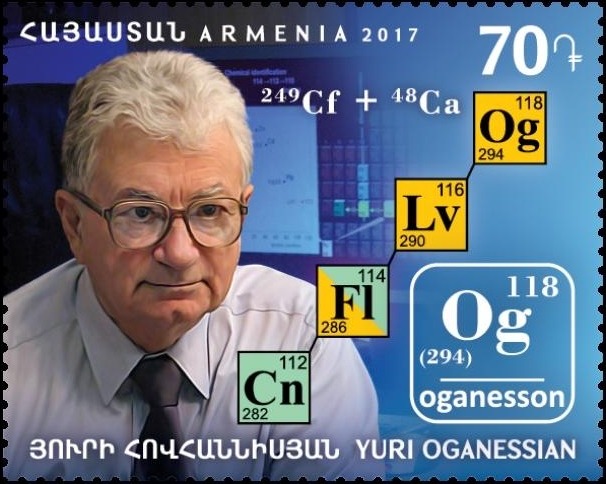Oganesson, with the symbol “Og” and atomic number 118 in the periodic table, is one of the recently discovered elements on Earth. However, unlike most elements, oganesson is created synthetically, and up to this day, its chemical properties remain unknown. The first chemist who discovered oganesson stated that it is a noble gas, but recent studies show that the element could be a reactive solid with a metallic appearance or a post-transition metal like iridium and zinc. Oganesson has the highest atomic number in the periodic table, which is brought about by being a recently discovered element and its atomic mass that is considered the highest among all elements. Because of the element’s rarity, it is difficult for scientists to study oganesson further, hence the reason why its chemical properties are still not verified. To know more about this mysterious element, let us take a look at the interesting discovery of oganesson.
Discovery of Oganesson
Before the discovery of oganesson, many chemists have already speculated that there is a seventh noble gas after neon, argon, helium, krypton, xenon, and radon, and this speculation has already been stated right after the first noble gas was discovered. A Danish chemist named Hans Peter Jørgen Julius Thomsen predicted that the seventh noble gas would be located at the 32-element period that also contains uranium and thorium. Danish physicists Neils Bohr, however, predicted that the seventh noble gas should have the atomic number 118, which would soon be considered a correct prediction.
Before the official discovery of oganesson in 2015, there have been many scientists claiming to be the first to discover the element. The first to claim the discovery of oganesson was Polish physicist Robert Smolańczuk, who published a report of his discovery in 1998. According to the physicist, he discovered oganesson during the fusion of atomic nuclei that form the synthesis of superheavy atoms. In addition, he stated that it is possible to produce oganesson by fusing krypton and lead under certain conditions. This process was repeated in 1999 by the researchers at the Lawrence Berkeley National Laboratory, who reported the discovery of oganesson and another element called livermorium. However, the researchers were unable to repeat the process to produce oganesson again in 2001, and in 2002, it was proven that the study used data that was fabricated by physicist Victor Ninov. From then on, the 1999 discovery claim was considered false.
The first genuine claim in the discovery of oganesson was published in 2005 at the Joint Institute for Nuclear Research or JINR in Dubna, Russia. The group of researchers that studied the new element was headed by Russian nuclear physicist Yuri Oganessian, who is mostly known to be the world’s leading researcher in superheavy chemical elements. Even though the findings were published in 2005, Oganessian’s group already discovered the element in 2002, but they first had to make sure that what they found is indeed oganesson. After the research’s publication, the process that allowed them to produce the element was repeated in the same year, but the second test utilized different beam energy and target thickness. After a year, the second test researchers stated that they had found three nuclei of the isotope oganesson-204 that is produced through the collision of calcium-48 ions and californium-249 atoms.
In 2011, the International Union of Pure and Applied Chemistry or IUPAC reviewed the findings in 2006, and they concluded that the study was not enough to support the claim that the new element has already been discovered. Regardless of the insufficient evidence, the researchers at JINR are confident that their discovery is not a false claim like the 1999 research, as they can repeat the test again to prove the existence of the element.
Around the same year that the IUPAC published their review of the 2006 research, a team of researchers at the GSI Helmholtz Centre for Heavy Ion Research in Darmstadt, Germany, found a single atom in a new isotope called oganesson-295. Because of the strong study conducted in 2011 to support the claim in 2006, the IUPAC and the International Union of Pure Applied Physics or IUPAP officially recognized the discovery of element 118.
On March 23, 2016, the teams of researchers responsible for the discovery of element 118 held a conference to talk about what the name of the new element should be. In the conference, it was ultimately decided that the name of element 118 would be “oganesson,” which is derived from Yuri Oganessian’s last name. They decided to call it oganesson to honor Oganessian because, without him, there wouldn’t be any further research on superheavy chemical elements that can be naturally or synthetically produced on Earth. After the official naming, it was reported that Oganessian felt very honored that the new element that he helped discover was named after him.


